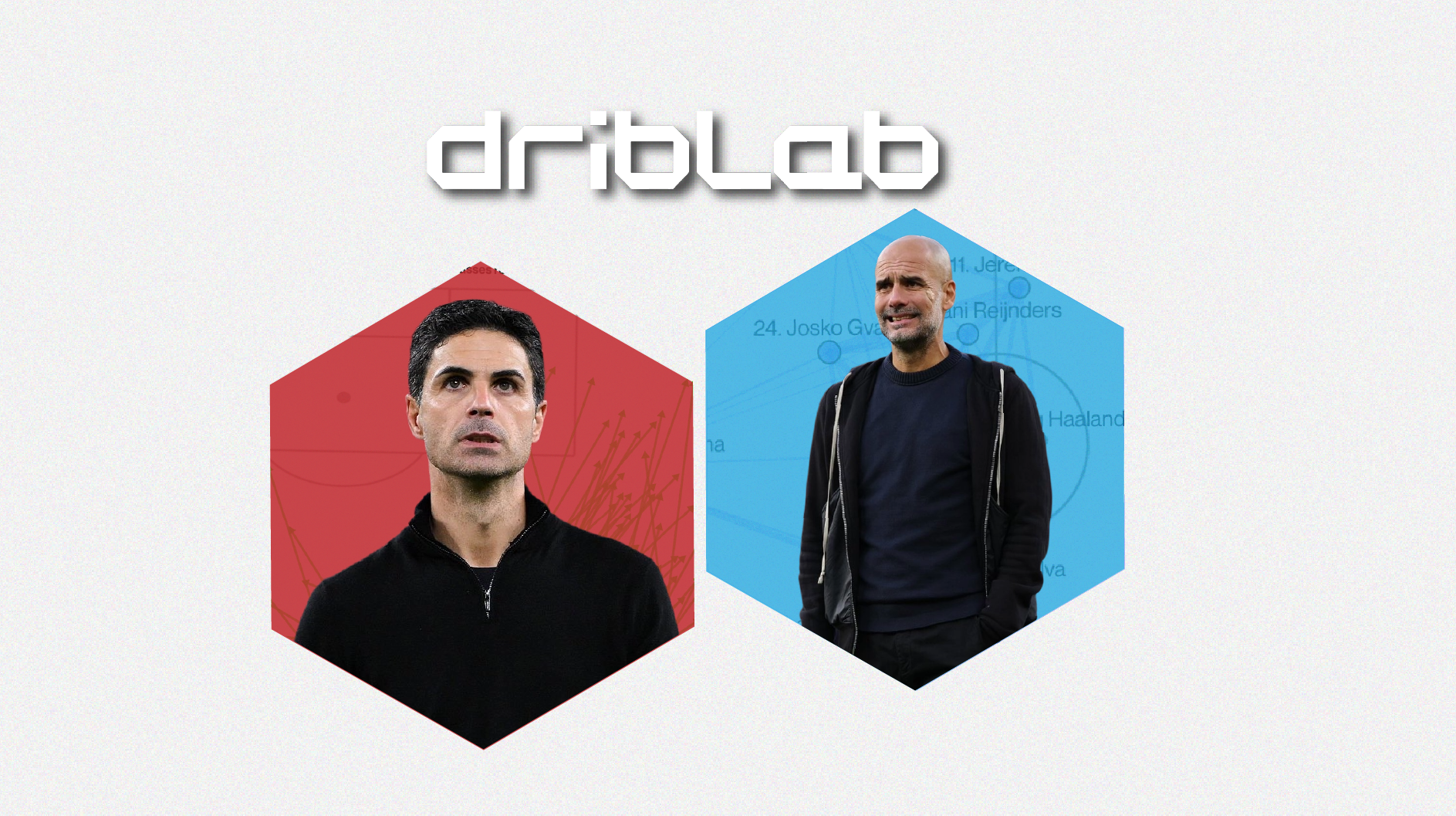The season is starting to take shape, and many teams have already planted the seeds of what they want their style to be throughout the year. Even after just five or six matches, we can already sense what many teams are trying to build.
In this piece, we’ll look at the most interesting changes in style among teams in the five top leagues from one year to the next, as well as those with the most disruptive playing styles in their domestic leagues.
Once we have a general overview of each of the top five leagues, we’ll use our newly released ‘Spatial Coverage’ tool —designed to analyze tactical patterns and collective structures with unprecedented precision— to dig deeper into the playing styles of the most interesting teams.


Serie A is quite a scattered league. Among the 17 teams that have remained in the competition over the past two seasons, we can see a cluster in the bottom-right quadrant made up of Napoli, Milan, Juventus, and Inter. The traditional Tre Grandi plus Napoli, winners of two of the last three Scudetti. These are teams that, to varying degrees, play a more controlled style of football, with longer possessions and slower attacking sequences.
The first truly significant stylistic shift experienced by a team in the Serie A this season came with Sarri’s Lazio. They have moved from slow and intricate style to a faster, more vertical one. This season, Lazio average 11.50 possessions with more than 10 passes per game; last season, the average was 13.42 —almost two fewer possessions with 10 or more passes per game.
You might be wondering about their neighbors, Roma. They are below average in both passes per possession and sequence speed. This means fewer passes and slower sequences.
This isn’t easy to explain, as many factors are involved. First, their coach, Gasperini, is one of the most intense and proactive managers both in and out of possession. It’s no surprise that this Roma side has the highest defensive line in Serie A over the last two seasons. According to our Defensive Line Distance OOP (out of possession) metric, which measures defensive line height without the ball, Roma’s line sits 38.3 meters from their own goal —7 meters higher than last year.
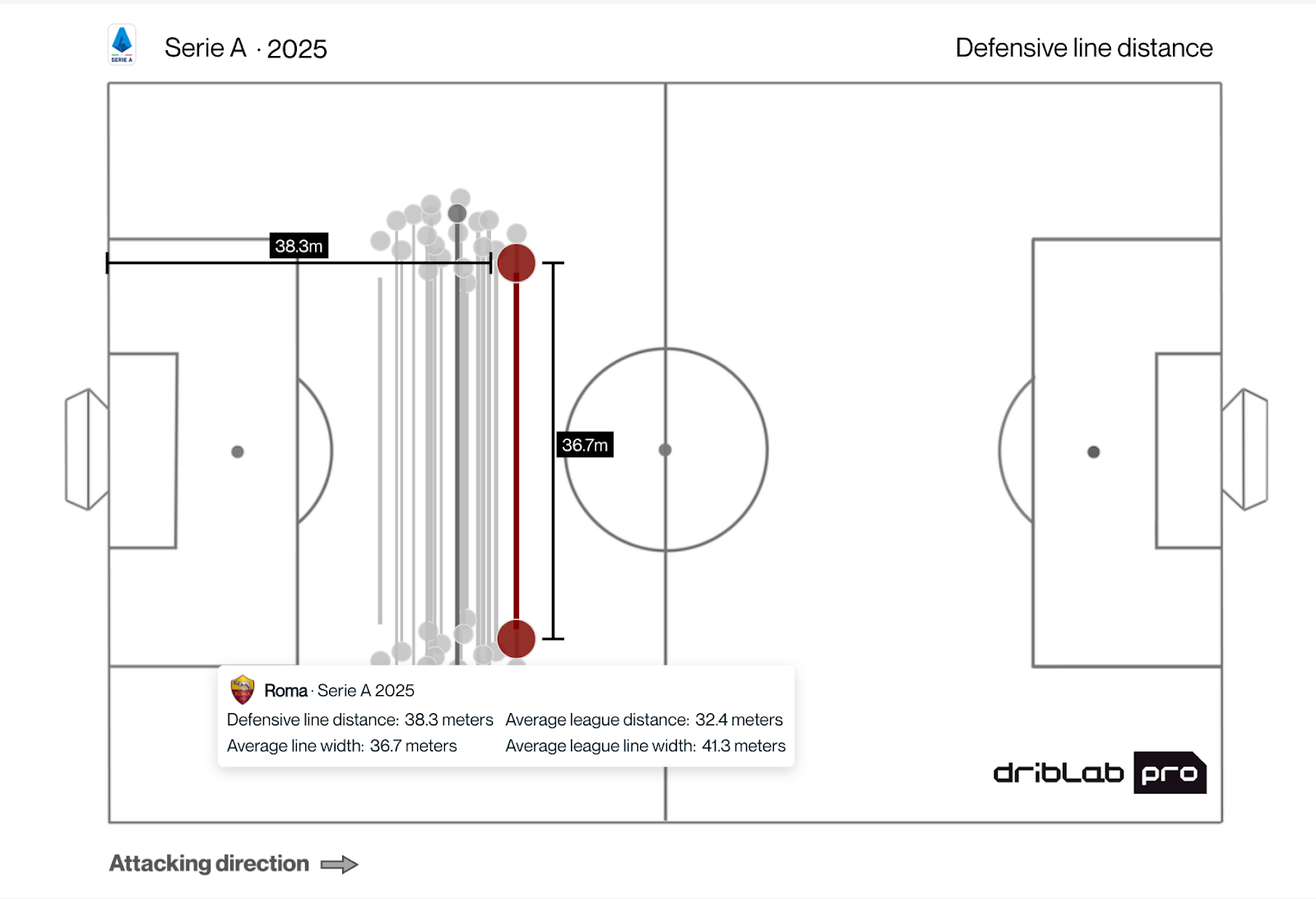
Not only that, Roma are the most intense team across the top five leagues: they allow just 6.54 passes per defensive action and average 15 recoveries in the opposition half per match. Most of their defensive work happens high up the pitch.
This helps explain why Roma average few passes per possession, yet, despite sitting above Juventus, Milan, and Napoli, aren’t as fast in attack as others. Many of their possessions start higher up (since they win the ball very high and need fewer passes to reach the final third), but they then keep the ball in advanced areas to find the best option rather than the first one —which naturally slows down their attacks.


If I said we wouldn’t talk about what’s happening to Girona, I’d be lying. Overall in LaLiga there haven’t been major stylistic shifts. Getafe have doubled down on their approach, Atlético de Madrid want to string more passes together, and Betis and Villarreal find themselves this season in the slow and complex quadrant.
The main topic in LaLiga is Girona, who have radically changed their style. The shift is so drastic that it’s fair to wonder whether it’s a deliberate choice or a consequence of the team’s poor performances.
Michel’s team average 6.62 turnovers per game in the first 40 meters of the pitch —the seventh-highest figure in LaLiga. However, nearly 20% of those turnovers lead to a shot (1.38 per match —the highest in the league).

Girona no longer control games like they used to. Last season, they averaged 16.21 possessions of more than ten passes, a figure only surpassed over the last two LaLiga seasons by Real Madrid, Barcelona, and Celta Vigo (2025/26). This year, however, Girona rank eighth-lowest in possessions with more than 10 passes per match.
Being a team with large distances between the first and last line in possession can have pros and cons. If your style relies on inviting the opponent to press, you want that distance. It stretches the opposition and creates space if you beat the press.
However, large spaces between the lines also means that when you lose the ball, those behind it are often completely removed from the action. Girona have the fifth-largest distance between their first and last outfield lines in possession, behind Athletic Club, Oviedo, Rayo Vallecano, and Mallorca —four teams currently underperforming. There’s a pattern there: good spacing helps, but too much can become problematic.
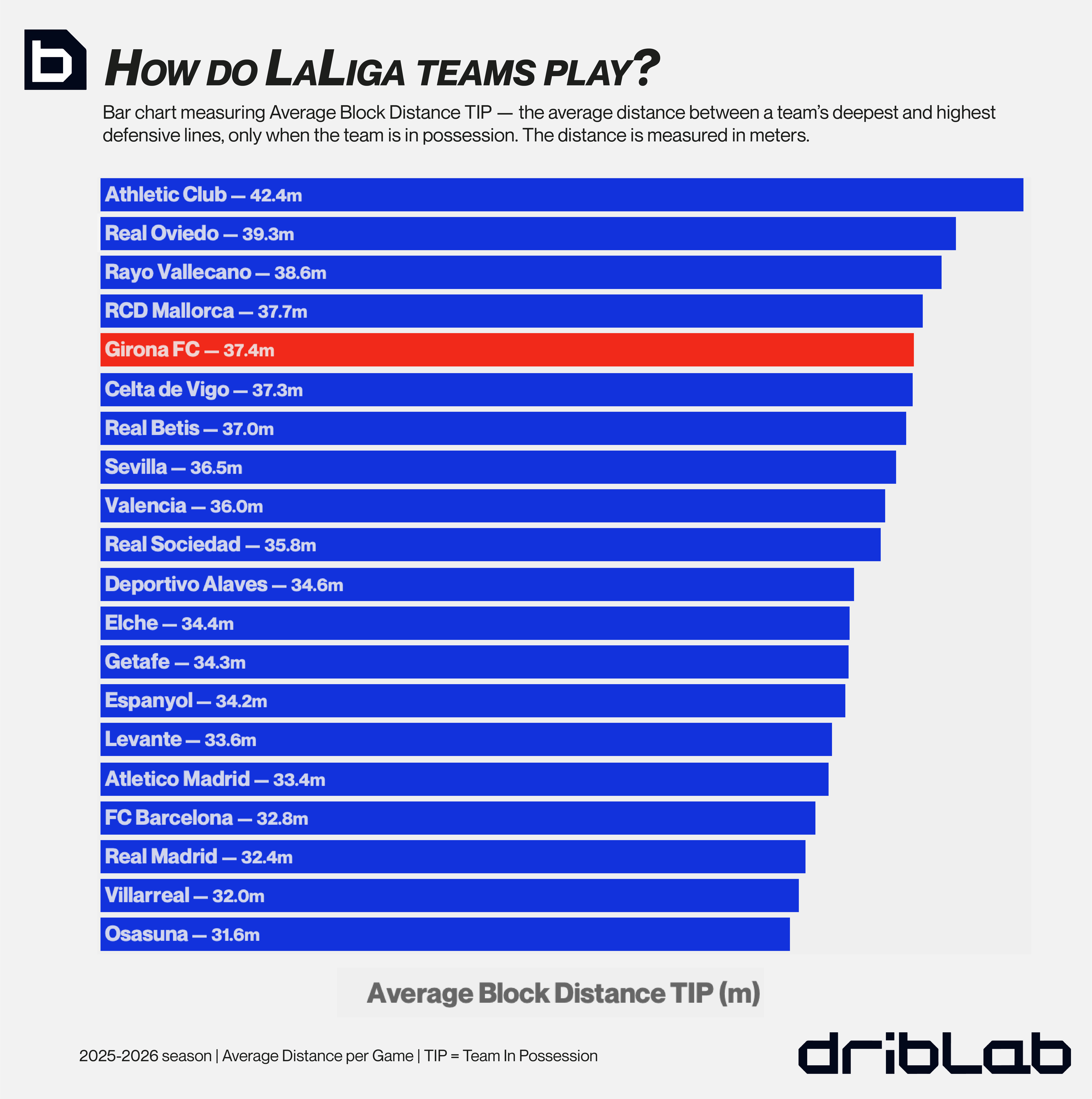


Two teams have made notable, though not total, stylistic shifts: RC Lens under Pierre Sage and Olympique Marseille under Roberto De Zerbi. Lens’ change is a direct result of Sage’s arrival —his ideas are almost the opposite of Will Still’s.
Sage has turned Lens into a more vertical team. Possession has dropped from 55% to 45%, defensive intensity has decreased (now 17.5 passes per defensive action, up by six from last year), pressing is lower (from 45.6% of defensive actions in the final 40 meters down to 39%), and they’re more direct (just 27.6 passes per shot, eight fewer than last season).
Our Spatial Coverage metrics anticipate all of this: Lens now have their defensive line closer to their goal, meaning they recover the ball deeper. They also have a shorter defensive block, three meters shorter on average than under Still.
.png)
Meanwhile, Olympique Marseille and Paris Saint-Germain have gone in opposite directions, despite starting from similar stylistic positions last season.
Luis Enrique has doubled down on slow, deliberate buildup, using long sequences and patient attacks to pin opponents back.
De Zerbi, on the other hand, has embraced verticality. Following his mantra of inviting pressure, Marseille circulate the ball in dangerous zones and then quickly exploit the spaces that pressing leaves behind.
.png)
Their decrease in passes per possession goes hand in hand with faster sequences and a rise in high defensive actions, 53% this season, up from 48%. They now win the ball higher, attack faster, and play more vertically. This improvement likely stems from the fact that OM are currently the best defensive team in Ligue 1.

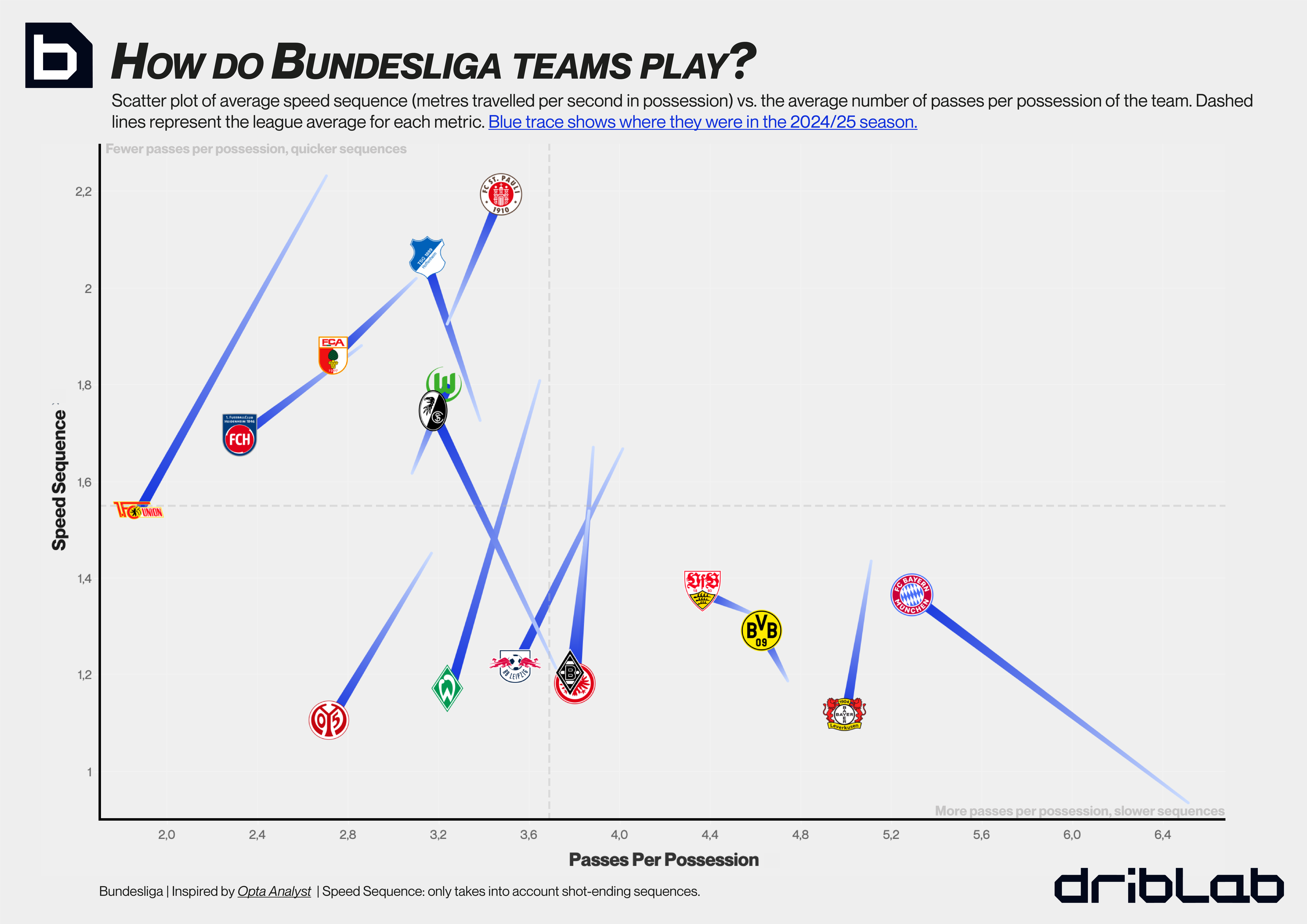
Has the Bundesliga become a slower league?
The stylistic movement of several teams suggests it might have. Of the 16 teams that remained from last year, nine have reduced their sequence speed: Union Berlin, Heidenheim, Augsburg, Mainz, Werder Bremen, RB Leipzig, Eintracht Frankfurt, Borussia Mönchengladbach, and Bayer Leverkusen. And all these drops are quite significant.
However, the undefeated leaders, Bayern Munich, deserve special mention. They’ve taken a clear step forward within their dominant style, even if they still are a team that wants the ball, wants it constantly, and prefers short passing.
Like Marseille, Bayern now average fewer passes per possession, a direct result of more frequent high defensive actions and a more aggressive defensive approach.
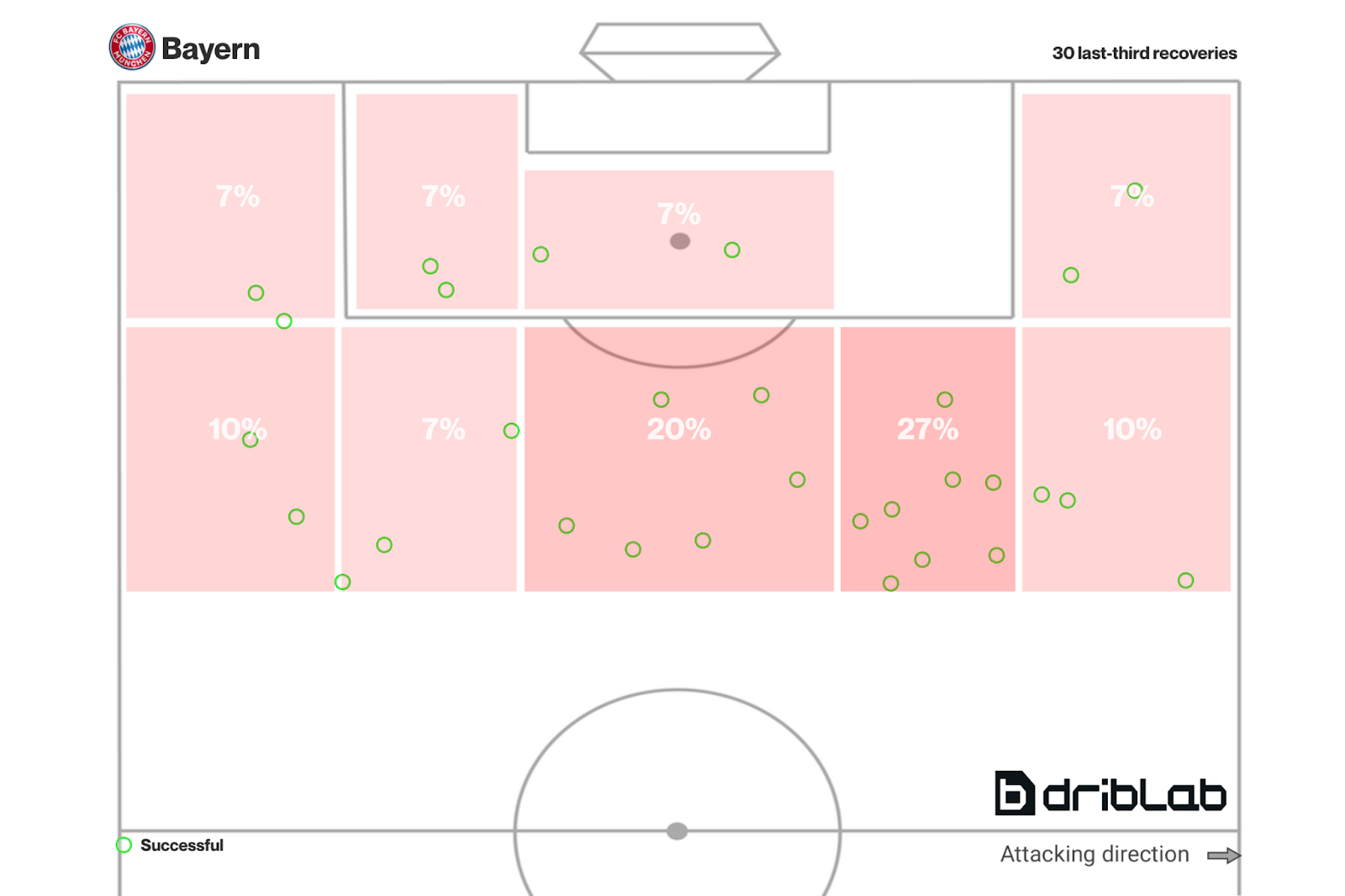
Our Spatial Coverage data shows that both the average last defender distance and the average defensive line distance are higher than last season —by 4 meters and 3 meters, respectively, when out of possession. Not a massive change, but enough to illustrate Kompany’s tactical adjustment.
The Average Block Distance metric completes Bayern’s defensive picture. The team have reduced the space between the first and last line by 10.9 meters without the ball and 5.6 meters with it. Among all teams across the top five leagues that have been in the top flight in consecutive seasons, Bayern are the side that have most reduced their inter-line distance.
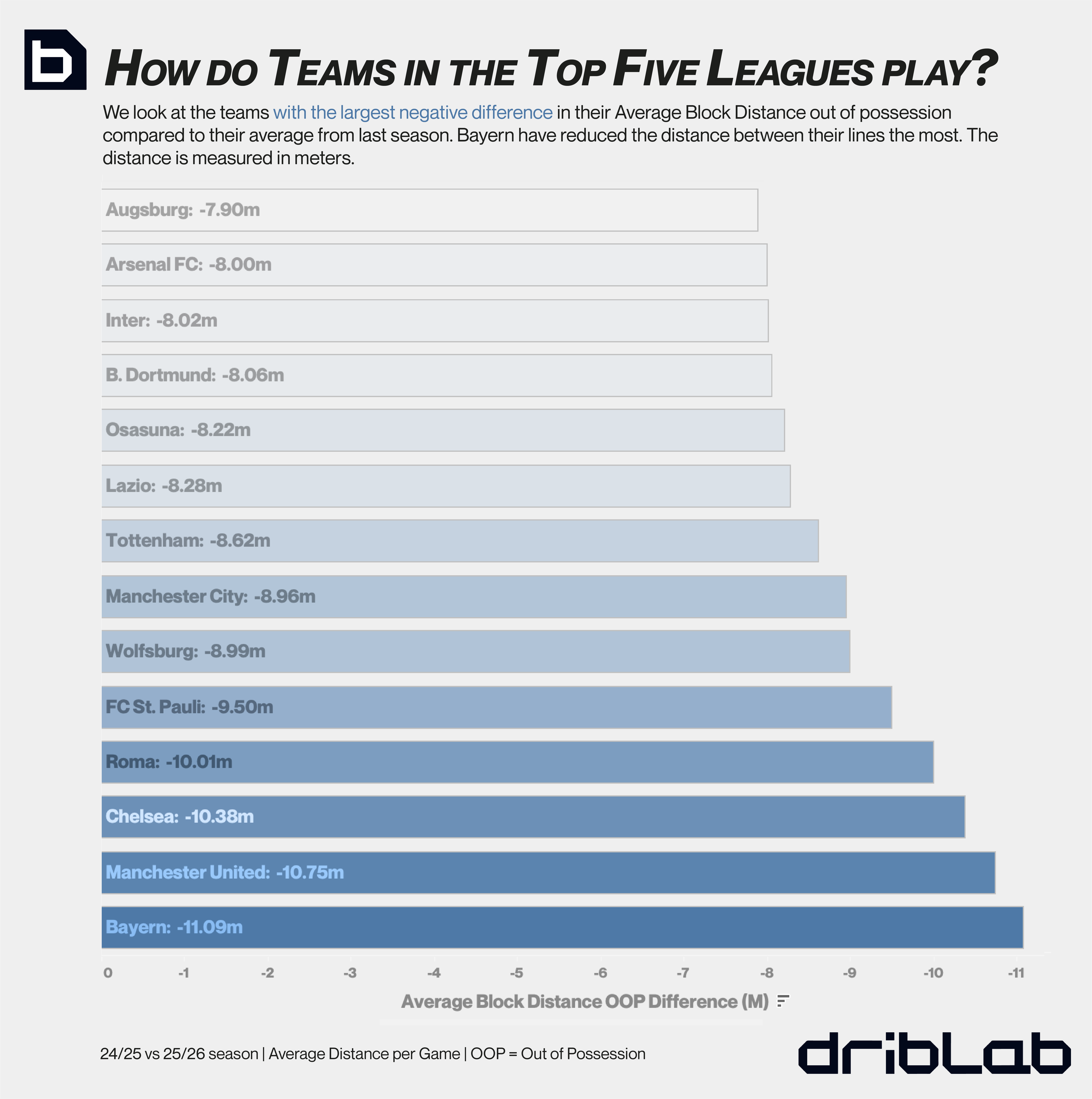

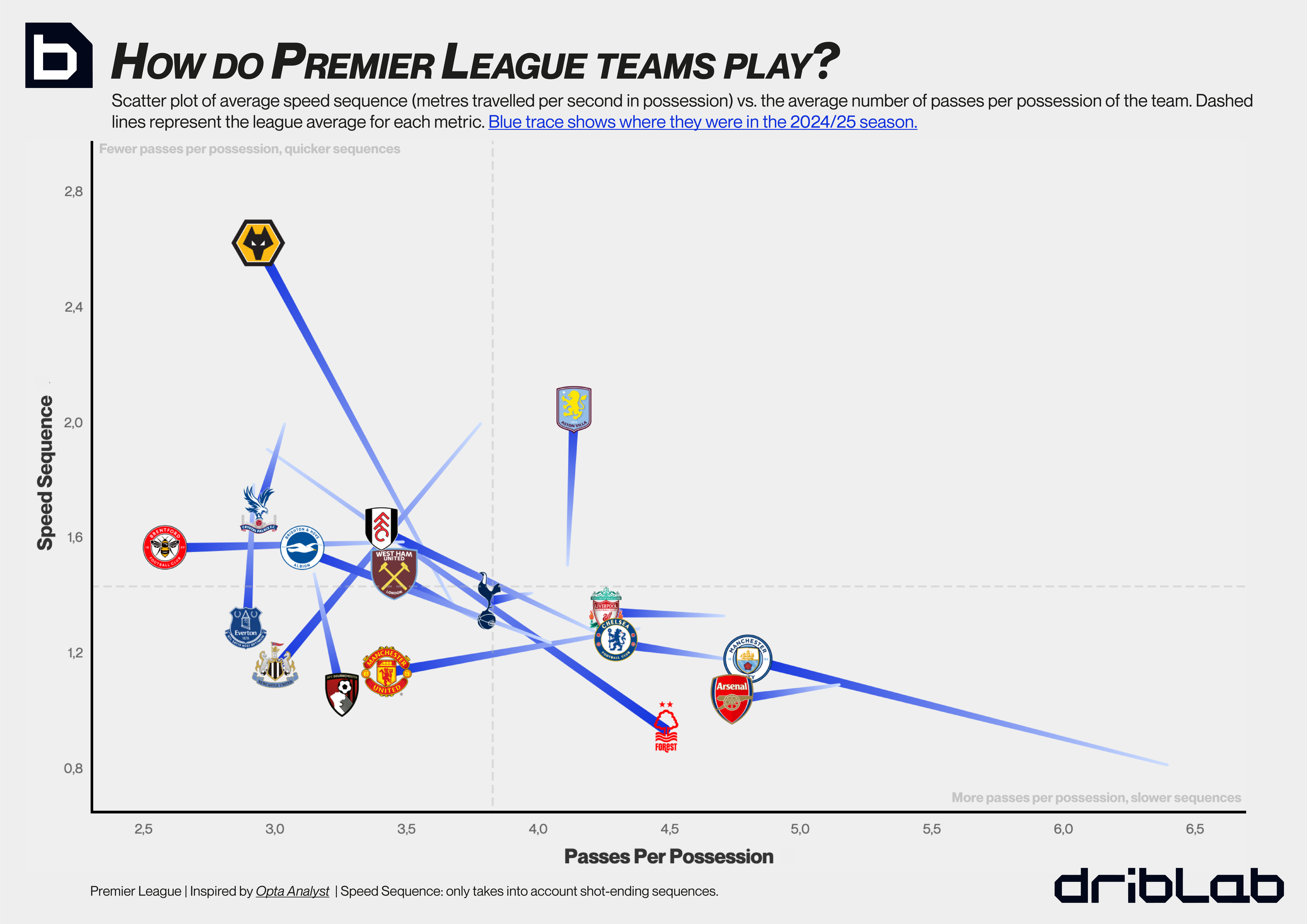
We’ve spoken at length about the direction both Arsenal and Manchester City have taken —something that became evident when they faced each other at the Emirates.
City have become a much more compact team, with a lower defensive line and shorter distances between units.
Across the Premier League, one broad trend stands out: many teams are now clustered stylistically in similar areas. It’s not the first time I’ve heard people say that several clubs this season are playing in a very similar way.
Two interesting cases: Newcastle have gone from attacking very quickly to doing so more slowly, suggesting they’re struggling to generate threat —they’re not pinning teams back as effectively as before. They are the second team in the league needing the most xG to score…
…behind Manchester United, who generate 1.89 xG per goal. Still, United rank third in total xG from open play. Our Spatial Coverage metrics paint a different picture of them this season.
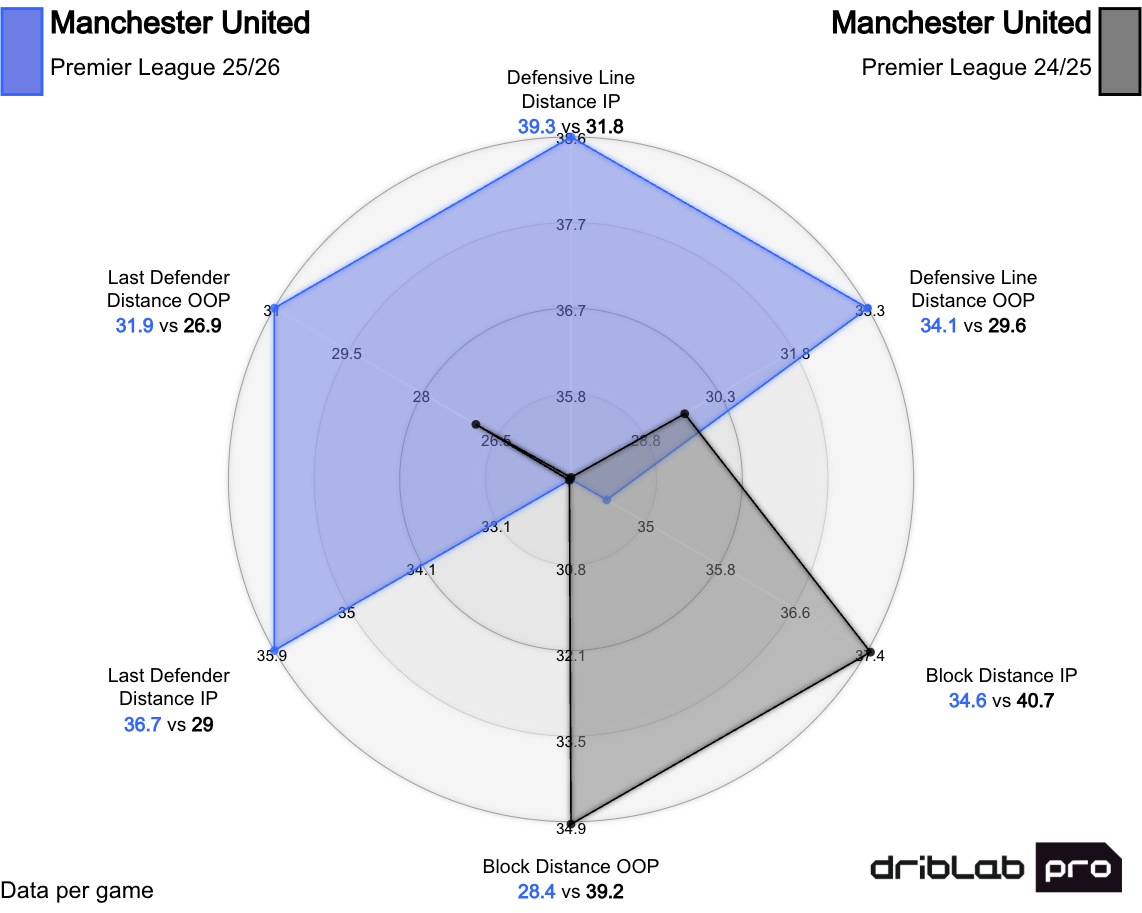
A very high defensive line, both with and without the ball, and smaller distances between lines. It seems last season’s lessons didn’t stick. United have changed their structure drastically —but the results will need to follow.


